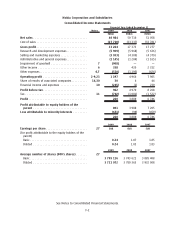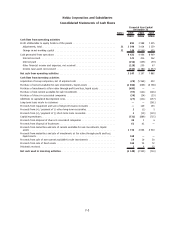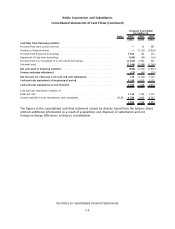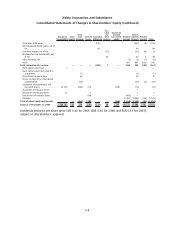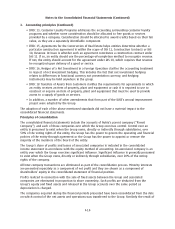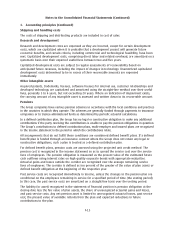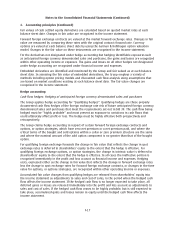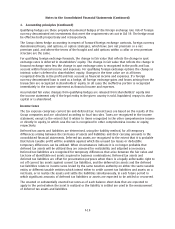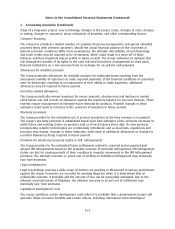Nokia 2009 Annual Report Download - page 186
Download and view the complete annual report
Please find page 186 of the 2009 Nokia annual report below. You can navigate through the pages in the report by either clicking on the pages listed below, or by using the keyword search tool below to find specific information within the annual report.1. Accounting principles (Continued)
Foreign Group companies
In the consolidated accounts all income and expenses of foreign subsidiaries are translated into Euro
at the average foreign exchange rates for the accounting period. All assets and liabilities of foreign
Group companies are translated into Euro at the yearend foreign exchange rates with the exception
of goodwill arising on the acquisition of foreign companies prior to the adoption of IAS 21 (revised
2004) on January 1, 2005, which is translated to Euro at historical rates. Differences resulting from the
translation of income and expenses at the average rate and assets and liabilities at the closing rate
are treated as an adjustment affecting consolidated shareholders’ equity. On the disposal of all or
part of a foreign Group company by sale, liquidation, repayment of share capital or abandonment, the
cumulative amount or proportionate share of the translation difference is recognized as income or as
expense in the same period in which the gain or loss on disposal is recognized.
Revenue recognition
Sales from the majority of the Group are recognized when the significant risks and rewards of
ownership have transferred to the buyer, continuing managerial involvement usually associated with
ownership and effective control have ceased, the amount of revenue can be measured reliably, it is
probable that economic benefits associated with the transaction will flow to the Group and the costs
incurred or to be incurred in respect of the transaction can be measured reliably. The Group records
reductions to revenue for special pricing agreements, price protection and other volume based
discounts. Service revenue is generally recognized on a straight line basis over the service period
unless there is evidence that some other method better represents the stage of completion. License
fees from usage are recognized in the period when they are reliably measurable which is normally
when the customer reports them to the Group.
The Group enters into transactions involving multiple components consisting of any combination of
hardware, services and software. The commercial effect of each separately identifiable component of
the transaction is evaluated in order to reflect the substance of the transaction. The consideration
received from these transactions is allocated to each separately identifiable component based on the
relative fair value of each component. The Group determines the fair value of each component by
taking into consideration factors such as the price when the component or a similar component is
sold separately by the Group or a third party. The consideration allocated to each component is
recognized as revenue when the revenue recognition criteria for that component have been met.
In addition, sales and cost of sales from contracts involving solutions achieved through modification
of complex telecommunications equipment are recognized using the percentage of completion
method when the outcome of the contract can be estimated reliably. A contract’s outcome can be
estimated reliably when total contract revenue and the costs to complete the contract can be
estimated reliably, it is probable that the economic benefits associated with the contract will flow to
the Group and the stage of contract completion can be measured reliably. When the Group is not able
to meet those conditions, the policy is to recognize revenues only equal to costs incurred to date, to
the extent that such costs are expected to be recovered.
Progress towards completion is measured by reference to cost incurred to date as a percentage of
estimated total project costs, the costtocost method.
The percentage of completion method relies on estimates of total expected contract revenue and
costs, as well as dependable measurement of the progress made towards completing a particular
project. Recognized revenues and profits are subject to revisions during the project in the event that
the assumptions regarding the overall project outcome are revised. The cumulative impact of a
revision in estimates is recorded in the period such revisions become likely and estimable. Losses on
projects in progress are recognized in the period they become probable and estimable.
F12
Notes to the Consolidated Financial Statements (Continued)


